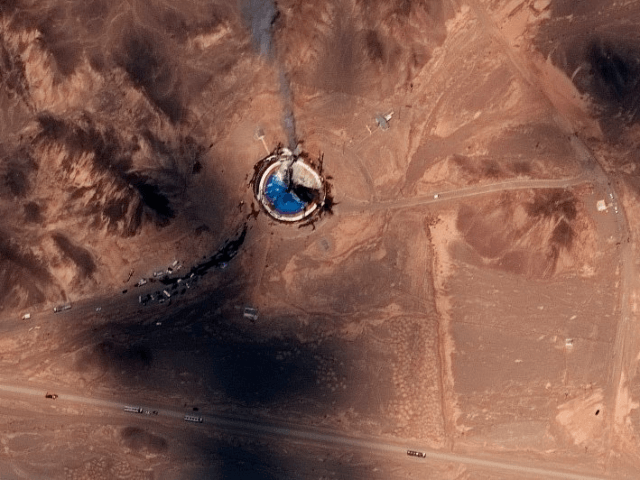Iranian Rocket Blows Up While Attempting to Launch
Post# of 65629

< >

An Iranian rocket reportedly carrying a telecommunications satellite blew up on the launch pad at Imam Khomeini Space Center on Thursday, marking Iran’s third failed satellite launch of the year.
“It was due to some technical issues and it exploded but our young scientists are working to fix the problem,” an Iranian official told Reuters without offering further details.
Iran’s young scientists would appear to have their work cut out for them, since Voice of America News (VOA) described satellite images showing “smoke rising from the launch pad and what experts say were the charred remains of a rocket,” plus “blue paint around the launch site appears to have been burned away.”
U.S. officials said the Iranian rocket may have exploded while it was fueling or during an active launch attempt. President Donald Trump commented on the incident via Twitter on Friday.
The United States of America was not involved in the catastrophic accident during final launch preparations for the Safir SLV Launch at Semnan Launch Site One in Iran. I wish Iran best wishes and good luck in determining what happened at Site One. pic.twitter.com/z0iDj2L0Y3
— Donald J. Trump (@realDonaldTrump) August 30, 2019
Iran announced in January that it planned to launch three satellites into space during 2019. U.S. Secretary of State Mike Pompeo responded by noting satellite launch vehicles “incorporate technology that is virtually identical to that used in ballistic missiles” and strongly advised Iran to scrub the launches or risk defying U.N. Security Council resolutions.
“The United States will not stand by and watch the Iranian regime’s destructive policies place international stability and security at risk,” Pompeo said in January. “We advise the regime to reconsider these provocative launches and cease all activities related to ballistic missiles in order to avoid deeper economic and diplomatic isolation.”
Iran scoffed at the U.S. warning but, while it has successfully launched satellites in the past, its efforts this year have been failures. “One satellite fired into space in January failed to reach orbit. A month later, another rocket apparently fell into the desert just after liftoff,” VOA News recalled.
Despite its rocket problems, Iran’s Tasnim news agency reported on Friday that the Islamic Republic will proceed with another daunting engineering task: the construction of a 500,000 square meter artificial island, ostensibly for “recreational and residential purposes,” despite the Islamic Revolutionary Guard Corps (IRGC) involvement in the project.
The IRGC is an aggressive military force loyal to the theocratic side of Iranian government and has been designated as a terrorist organization by the U.S. government. Iranian officials claimed the IRGC offered to help with the island construction and other civilian projects to “cut dependence on foreign countries.”
Radio Farda noted the growing role for the IRGC in civilian projects over the past 15 years is controversial in Iran, saying:
“It is a necessity to delegate economic activities to the real private sector,” [Iran’s secular President Hassan] Rouhani said during a Ramadan fast-breaking banquet, or iftar, held late June 22, 2017, in Tehran.
Ten years earlier, in 2007, the Islamic Republic Supreme Leader, Ayatollah Ali Khamenei, had demanded that government officials speed up implementation of the policies outlined in an amendment to Article 44 of the constitution and move towards economic privatization.
Referring to Khamenei’s directive, Rouhani said, “If the policies of Article 44 of the constitution were implemented exactly, we would have a great revolution and progress,” adding, “Yet, what did we do? A part of the economy was controlled by an unarmed government, and we delegated it to an armed government. This is not [a sound] economy or privatization.”
Rouhani, by using the term “armed government” referred to the Islamic Revolution Guards Corps (IRGC), which dominates Iran’s non-governmental sector.
The new artificial island would be located near Kish Island, which is a commerce and tourism hub of somewhat dubious appeal ever since the relatively fun-loving Shah of Iran was overthrown by the dour Islamist revolutionaries who rule the country today.
 (0)
(0) (0)
(0)